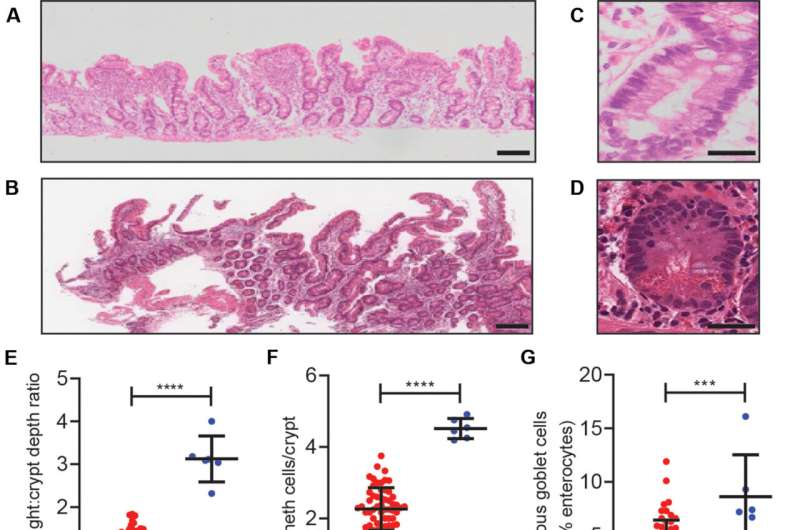January 4, 2024 report
This article has been reviewed according to Science X's editorial process and policies. Editors have highlighted the following attributes while ensuring the content's credibility:
fact-checked
peer-reviewed publication
trusted source
proofread
A regimen for treating environmental enteric dysfunction

A team of medical researchers at Washington University School of Medicine, working with colleagues from the University of Zambia School of Medicine and Cedars-Sinai Medical Center, has developed a regimen for treating children with environmental enteric dysfunction. For their project, reported in the journal Science Translational Medicine, the group studied environmental enteric dysfunction in children living in Zambia and possible ways to treat it.
Environmental enteric dysfunction (EED) is a condition that often develops in the intestines of children who are malnourished. Children with the condition typically experience inadequate nutrient absorption, inflammation and undersized growth. Thought it has not been measured, most in the medical community believe that approximately 5 to 7 million children around the world have EED, most in low-income countries.
And while some research has been done to better understand the condition, the factors involved in malnutrition leading to the development of EED are unknown. It has been found that giving children with the condition regular food does not reverse EED; thus, treatment options are needed. In this new effort, the research team searched for the root cause of EED and attempted to develop a therapy that leads to a return of normal intestinal function.
To find the root cause, the researchers recruited 15 children living in Zambia, all of whom had EED. Each was subjected to a battery of tests designed to isolate the factors that led to the development of EED. They discovered that children with EED had fewer numbers of certain cells in their small intestine—cells involved in the immune system of a type that signal for increased production of bile. The researchers also found low levels of NAD+, a molecule involved in metabolism.
To look for possible treatments, the research team engineered lab mice to exhibit the same symptoms as children with EED and then gave them various therapies. They discovered that eating too little protein was the root cause of EED. They also found a genetic component that made some children more susceptible to developing the disorder—it was the main factor in reducing levels of NAD+. They found that feeding the mice protein along with NAD+ reduced the excess production of bile and restored the missing cells in the lower intestine, reversing EED. The team plans to continue testing their approach, moving to human subjects as soon as possible.
More information: Atika Malique et al, NAD + precursors and bile acid sequestration treat preclinical refractory environmental enteric dysfunction, Science Translational Medicine (2024). DOI: 10.1126/scitranslmed.abq4145
© 2024 Science X Network



















